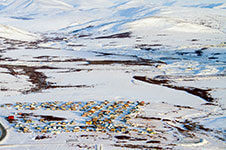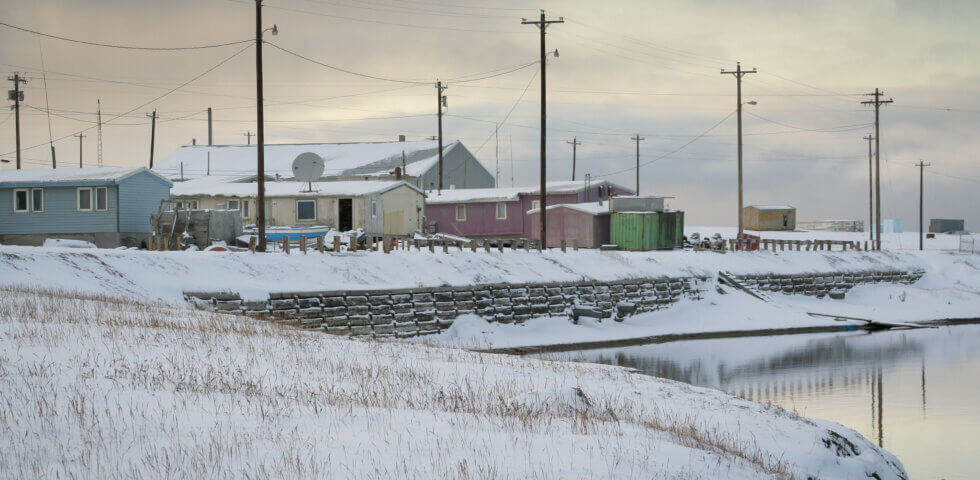While digital equity is a topic that touches essentially every aspect of modern society, the impacts of the digital divide are most profound in the area of education. The education of younger generations has a direct impact on future growth — empowering students to develop their talents, creating more employment opportunities, and improving the economy as a whole.
At Quintillion we know that reliable, fast, and affordable broadband services are essential for enabling schools across Alaska to best serve their students. However, Alaska faces many challenges in getting the basic infrastructure it needs to achieve a more digitally connected State. What follows are some of the key reasons why broadband access is so critical for the education system in Alaska.
Broadband Access Is an Indicator of School Performance
In many communities, poor access to broadband services directly correlates with students’ school performance. One 2020 study by Michigan State University found that middle and high school students who have access to high-speed internet in their homes have many advantages, including:
- Better standardized test scores (including the SAT)
- Generally higher grades
- More advanced digital skills
- Increased likelihood of attending higher education
- Higher interest in STEM-based careers
These findings were consistent regardless of socioeconomic factors. The communities most affected by a lack of internet access are small, rural communities where broadband infrastructure is unavailable. While 77% of students in suburbs and 70% of students in cities have access to high-speed internet, only 53% students living in rural communities can say the same. Almost 10% have no internet access in their homes at all.
While students with a fast internet connection have an average GPA of 3.18, students with no internet access have a GPA average of 2.81, and students who depend on a cellphone for access have an even lower GPA average of 2.75. Students from rural areas are also less likely to seek educational activities outside of school, finish their homework, or seek out support from peers and teachers from home.
Students Struggle to Access Help for Mental Health Problems
While children, adolescents, and young adults have been struggling with worsening mental health issues for over a decade, the COVID-19 pandemic took a serious toll on younger generations. The issue has progressed so much, that at the end of 2021, the American Academy of Pediatrics, the American Academy of Child Adolescent Psychiatry, and the Children’s Hospital Association all joined together to declare a National State of Emergency in Children’s Mental Health.
There has been an alarming rise in mental illness and suicidal behavior in children in the US. Hospitals saw a large increase in Emergency Department visits for mental health emergencies, and suicide has been the second leading cause of death for children and young adults aged 10 to 24 since 2018. While there are many factors contributing to this national emergency, some factors include social isolation during the pandemic, loss of loved ones, and difficulties accessing care.
These issues are often even more pronounced in rural areas, including in rural Alaska where rates of mental illness, including substance abuse and suicide rates, are high. Telemedicine is vital for accessing therapy in these communities. Many rural towns have long, difficult commutes to the nearest mental health provider, which may not even be accessible by car.
For children with serious, chronic mental health problems, it can be nearly impossible to get care without an online appointment. However, over 200 communities in Alaska don’t have access to reliable broadband. Even in communities where people can access services using a public location, it is suboptimal to speak with a mental health professional in this setting.
With the lack of mental health providers across the nation in the midst of the children’s mental health emergency, some experts believe that schools are part of the long-term solution to helping students navigate these issues. This is especially true for areas with lower socioeconomic backgrounds. Schools need to be equipped with the technology, resources, and training necessary to help students.
Remote Learning Depends on Broadband Access
The COVID-19 pandemic quickly propelled American society into a more digitally dependent world. When educational institutions shut down throughout the country, schools in rural Alaska communities struggled to navigate the situation. Many children did not have access to broadband at home, which made it impossible to meet with other students online and/or work on assignments that required research and internet use to complete.
In 2020, Kimberly Hankins, the Superintendent for the Lower Kuskokwim School District (LKSD) talked about the challenges of distance learning during the pandemic when only 15% of students in the district had access to internet at home. “When we think of remote learning, we don’t call it online learning because it’s not a reality for us in LKSD.”
Local internet providers helped to find temporary solutions, which allowed students the ability to access lessons without needing internet access. In addition, many teachers put a lot of time and effort into creating both paper packets, as well as prerecorded lessons on USBs.
However, Hankins emphasized this was only a band-aid solution for a serious broadband access issue: “We need equity of internet, it’s just become a huge issue…. It doesn’t solve that larger problem. The cost is just so prohibitive to our families.”
While Alaska communities continue to struggle with the toll of the pandemic and the effect it has had on residents’ health, gaps in connectivity continue to be a serious issue for students. Broadband access for schools and students is essential for helping communities remain resilient in times of emergency.
Colleges and Universities Require Large Bandwidth
When it comes to colleges and universities, a large amount of bandwidth is required to support the number of students, faculty members, and staff who require the internet to teach classes, conduct research, and complete assignments. Moreover, tribal colleges across the country struggle with broadband access, which has caused numerous difficulties throughout the pandemic, as many locations moved to an almost entirely online model.
In 2019, Ilisagvik College, which is North Slope, Alaska’s tribal college and primary higher education facility, was recorded to have the lowest bandwidth of all tribal college in the United States. During the pandemic, the college had made the decision to limit the number of people on campus, including staff and students, and to instead turn to more virtual learning courses. Quintillion partnered with Alaska Communications to boost the college’s Internet access and more than double its bandwidth.
Students going to colleges in Alaska communities offer a huge benefit for these towns, both in the short term and the long term. However, as many universities adopt a more virtual or hybrid model, they’ll need adequate broadband access to keep up with the demand.
Navigating Alaska’s Complex Broadband Needs
It’s easy to identify issues within Alaska’s broadband situation; however, finding solutions is where the difficulty lies. Alaska’s remote rural community is unique from anywhere else in the United States. Getting materials to build broadband infrastructure to these locations is hard enough — actually constructing them in below freezing temperatures and Arctic conditions is a whole different challenge.
Digital equity is an important part of Quintillion’s mission, and we believe this starts with our schools. While broadband continues to be an issue in many parts of the state, we know that a well-connected education system is essential for ensuring no student is left behind and that every Alaskan has the opportunity to pursue a higher education.
Quintillion is a proud partner of Alaska rural communities. Have questions for our team? Reach out to us to learn more.















